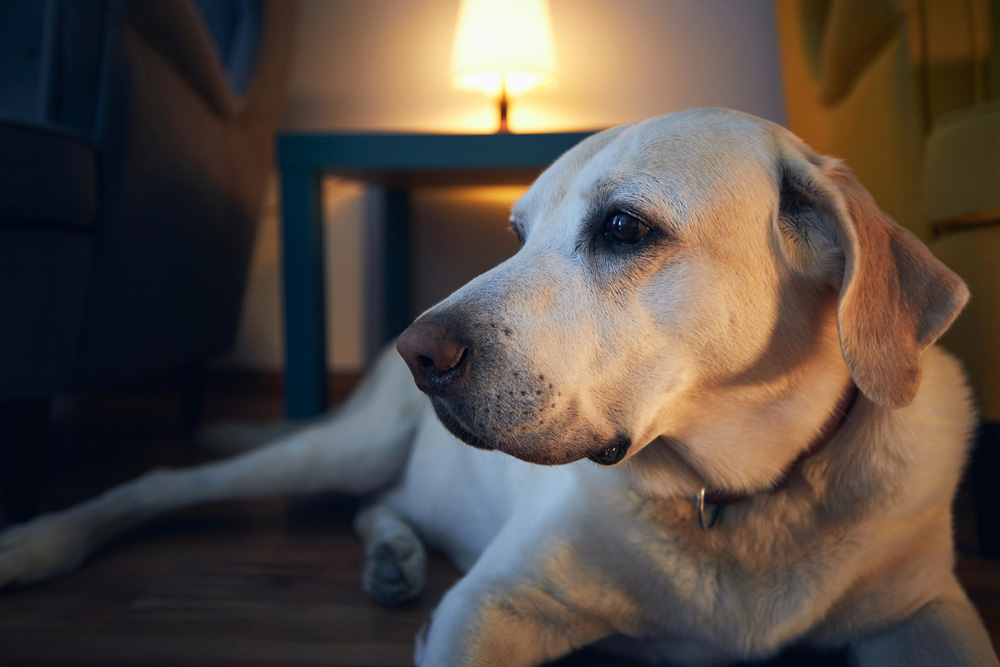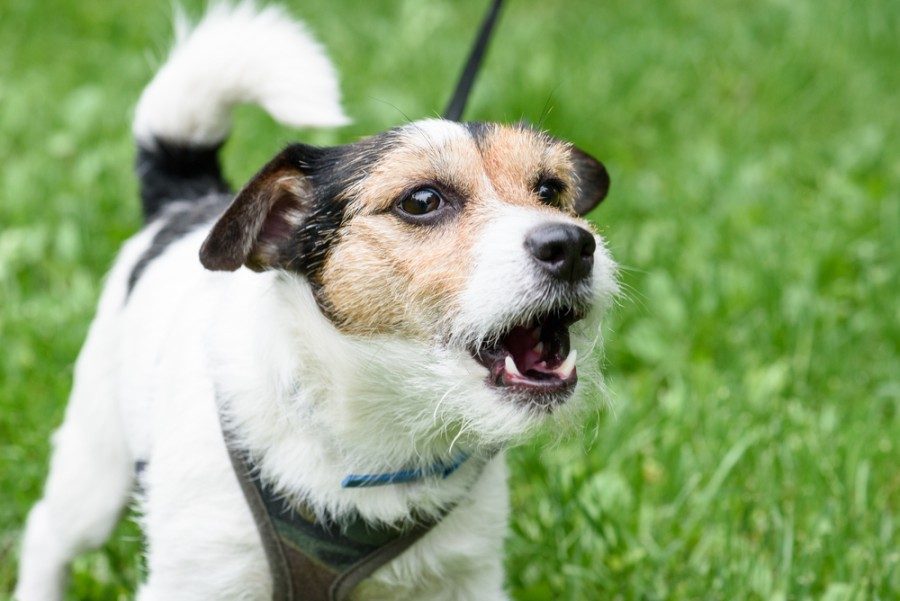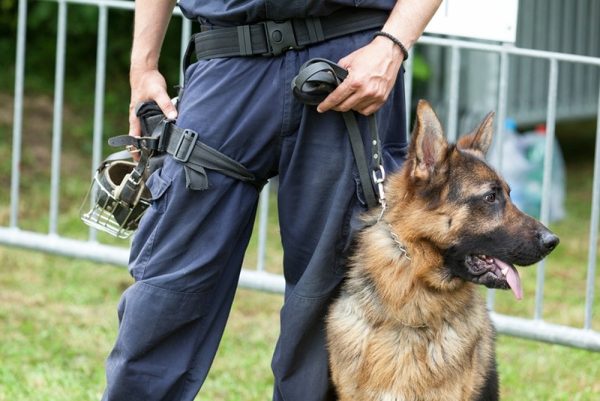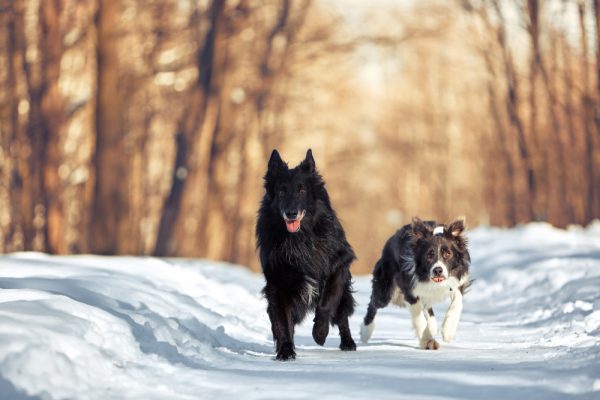Dogs are just gonna bark. It’s one of the ways that they communicate with us and the world around them. However, excessive barking can become a real nuisance, especially for your neighbors!
Some dogs are quiet, but if you have a dog that loves to bark, you need to learn training tips to control it. In this article, we discuss the common causes of dog barking and how you can manage it effectively.
The 10 Tips to Train a Dog to Stop Barking
1. Figure Out Why Your Dog Is Barking
The first and most important step is to determine what is triggering your dog’s barking. Removing or reducing the trigger can help you deal with the behavior. For example, if your dog is barking because they are bored, you need to ensure that they are getting enough physical and mental exercise.

2. Don’t Reward Your Dog for Barking
Dogs will learn that when they want something from you, barking will typically work. If they bark and you then feed them or throw them a ball, your dog is, in a way, doing the training here!
If you suspect that your dog is barking for attention, the best thing to do is ignore them by turning your back and walking away. They will eventually learn barking isn’t getting them what they want, and you can reward them for staying quiet instead.
3. Teach Your Dog Other Ways to Gain Your Attention
If you’ve been ignoring your attention-seeking dog’s barking, you now need to give them a different method to gain your attention. You can teach your dog a quieter way, such as sitting at your feet and making eye contact. Only “reward” your dog’s behavior when they are quiet, and ignore them when they bark.

4. Train Your Dog to Be Quiet on Command
This tip is in line with the previous one; you’re still training your dog to be quiet but on cue. When your dog is barking and then stops, give them a high-value treat. Even if they have only stopped barking for a moment, that moment of silence is rewarded.
Each time your dog barks and is silent, wait a bit longer before treating, and when you start to anticipate that your dog is about to stop, start giving a command.
You can try something like “quiet” or “settle” and treat them when they stay quiet. After a while, your dog will learn to stop barking on your cue.
5. Don’t Leave Your Dog Alone for Long Periods
Dogs are social animals and enjoy the companionship of people and other animals. Dogs that are left alone for long periods, whether unsupervised outside or indoors when their owners are away for hours, often resort to barking. You should keep your dog occupied while in the yard so they aren’t motivated to bark at everything that moves. They need exercise and playtime with you, not being tied up in the yard, which is not a form of exercise, anyway.

6. Teach Your Dog How to Have Self-Control
Some dogs bark because they have trouble controlling their impatience and frustration. Obedience training can give you a start on helping your dog feel like they have more control over their environment. Try teaching commands, such as “leave it” or maybe “watch me,” as these will show your dog that being patient has its rewards and that they don’t need to resort to barking.
7. Teach Your Dog to Go to Their Place
You’ll need to have a place that is your dog’s calm and comfortable spot. This can be their bed or crate, as long as your pet enjoys it and associates it with peace and quiet. You’ll need to train your dog to “go to place” when something sets off their barking (like visitors).

8. Prevent Your Dog From Greeting Guests
If people coming to visit sets off your dog, whether from excitement or anxiety, you should ensure that they aren’t around to greet them at the door. This might be another “go to place” situation, or you can try a baby gate or pen as a barrier from the entryway. Once your dog is calm, you can bring them in to socialize.
9. Block Your Dog’s View of the Outdoors
Many dogs tend to be territorial and spend time watching the neighborhood from the windows. If your dog does this and barks at everyone passing by, including the poor mail carrier, it can become reinforcing and an ingrained behavior. They bark, and the dog walker or the mail carrier leaves, so the dog believes that they are effectively scaring them off.
The simplest and most effective way to prevent this is to block your dog’s view. Invest in thick curtains or bottom-up blinds (which will block the view but still let in light).

10. Get Professional Help
Professional help from qualified behaviorists and dog trainers will give you personalized support and guidance. Always look for a dog trainer who uses positive reinforcement to help you choose the best training methods for your pet.
Additionally, some dogs might have health issues, such as hearing loss, that are contributing to their barking, or they might have an extreme form of separation anxiety that requires a veterinarian’s help.
If you need to speak with a vet but can't get to one, head over to PangoVet. It's an online service where you can talk to a vet online and get the personalized advice you need for your pet — all at an affordable price!


Why Do Dogs Bark?
The most common reasons that dogs bark are as follows:
- Territorial barking: This is a response to animals and/or people entering the dog’s territory.
- Attention-seeking barking: Barking is used to gain attention and rewards, such as food, treats, and playtime.
- Compulsive barking: Repetitive barking is often accompanied by repetitive behavior, such as pacing.
- Alarm barking: Dogs bark in response to sounds and sights, which isn’t always a territorial reaction.
- Greeting barking: This dog is just saying, “Hello!” and it’s usually accompanied by a wagging tail and a relaxed body.
- Frustration-induced barking: This barking is generally related to a frustrated dog, such as when kept in confinement or when being separated from something that they want to join.
- Socially facilitated barking, also known as “response barking,” occurs when dogs start barking in response to another dog is barking.
If your dog fits one or more of these, this can give you the tools to start reducing your dog’s barking.

What Not to Do When Your Dog Is Barking
You should definitely avoid using any form of punishment to stop your dog from barking. Punishment only makes the dog fearful and anxious and will lead to worse behavioral issues. You don’t want to invest in electronic shock collars, which are considered inhumane for obvious reasons. You also shouldn’t consider debarking, which is a surgical procedure conducted on a canine’s vocal cords.
Dogs have good reasons to bark at times, and while training can take time and patience, it is the most effective method, and it will strengthen your bond and lead to a more well-adjusted dog.
Conclusion
Dogs may bark for different reasons, some of which might be helpful in certain situations. Therefore, it is essential to respond to your dog’s barking in a positive way or in some situations by ignoring them, not by yelling or scolding them.
The approach that you take to address the barking ultimately depends on why your dog is barking in the first place. The best methods to tackle the barking issue entail understanding why it’s happening and staying consistent with your training.
By providing your dog with the love and support that they need, they will learn when to bark and when to remain quiet.
See Also:
Featured Image Credit: Alexei TM, Shutterstock




















2 Responses
Hi,
Love your article as my lab mix dog barks sometimes we don’t see anything outside or hear anything outside that she could be barking at. We’ve tried doing some of the things that you mentioned and our dog still barks. She listens to me more than my husband for some reason. This morning she was barking a lot I immediately told her to sit down which she did(I’ve the main trainer for her) and then in a kind manner I talked to her telling her not to bark and that I wanted her to stop barking which after talking to her she immediately stopped barking and laid down. I know she can hear better than we do. I’ve taught her to sit, lay down, stay, come, paw(those those ones I believe a foster taught her) wave, crawl, high five, touch, also some just using hand signals like lay down and sit and others. She also knows catch. With what I did this morning is sometimes rare as she’ll keep barking. Most of the time she wants another treat which she already got before barking. Any other suggestions to stop her from barking? She’s not our first dog as I’ve had dogs all my life and my husband has dogs most of his life. All the other dogs we’ve had were trained to not bark successfully but this one is more difficult. Also can I have advice on another matter. She gets very nervous when we take her out for a ride. She wants to be with us but once inside the car she starts panting excessively and paces and sometimes tries to get into the front seat with her. Any suggestions? Her background is kind of a sad one she was found abandoned with her two siblings in a very rural area in the south. She’s was found when she and her siblings were 3-4 months old. She was more sensitive than her siblings were according to the shelter we got her from. She was 7 months old when we got her. She’s very nervous around loud sounds like thunder or fireworks. We keep the tv up loud during and comfort her during those times. Any ideas to help her? I did talk to our vet about everything. They gave us a few suggestions but some didn’t work.
Thank you, sorry this is long.
Debbie
Hello Debbie,
thank you very much for sharing your story, although we are sorry to hear about your dog's barking and anxiety issues. Since it seems you have quite a few specific questions, the best we could recommend you here is getting a second opinion from one of our professional veterinarians from PangoVet.com. You can head to www.pangovet.com and book a video-call appointment at your convenience. In 20-minute call you can ask our vet questions and they will give you their expert opinion and some great training tips.
Hope this helps.